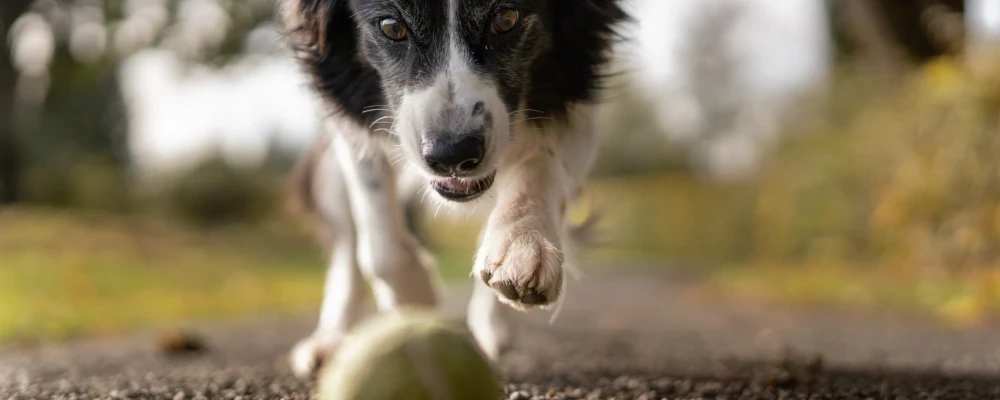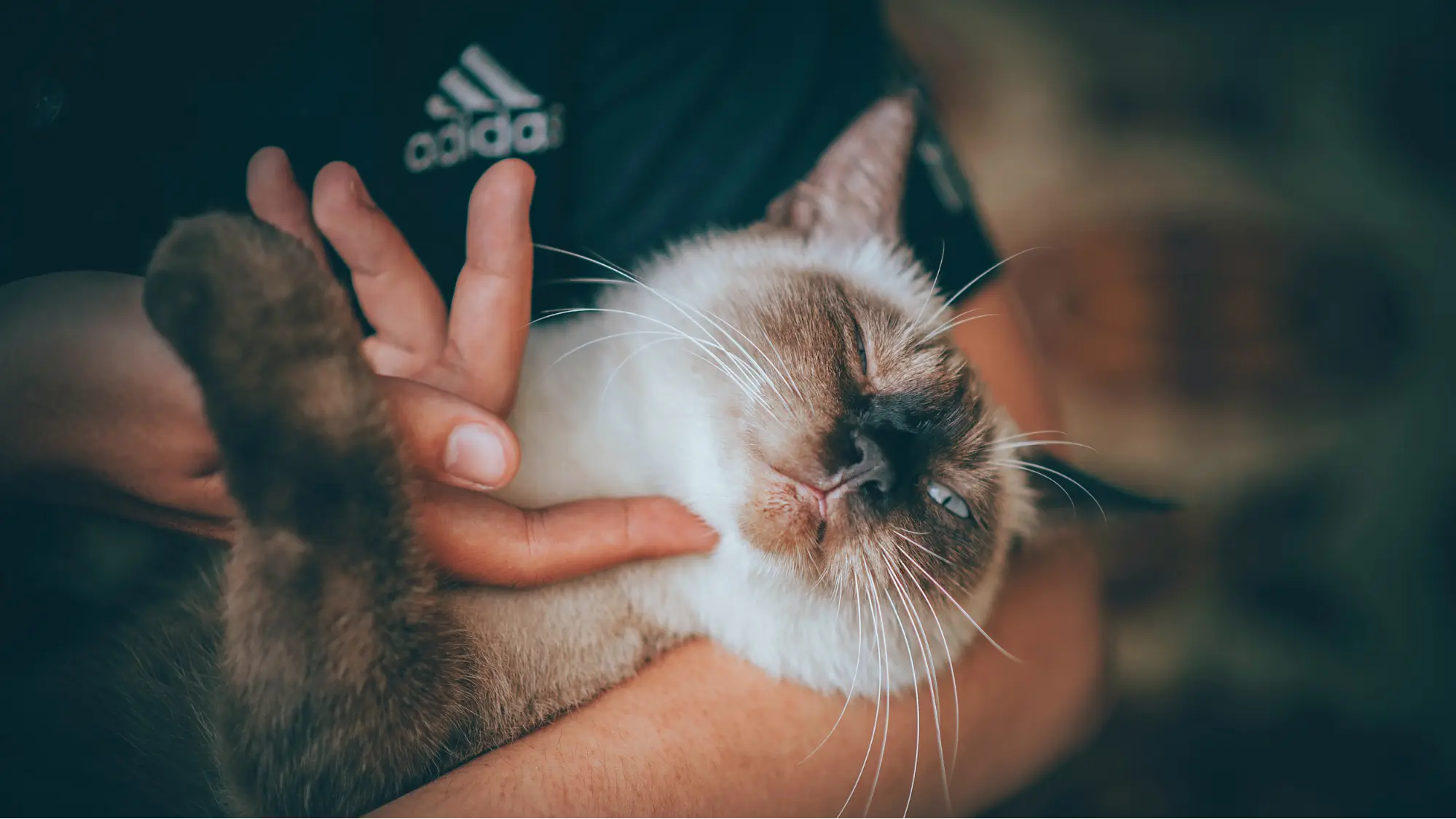Spot Pet Insurance Review

Our content follows strict guidelines for editorial accuracy and integrity. Learn about our and how we make money.
In the United States, seventy percent of households have a pet. This is a huge increase from 1988 when only 56% of households owned a pet. While it’s a joy to have a furry family friend, it also comes with a range of additional household costs, such as food, treats, and–most notably–vet care.
To help manage the costs of emergency vet bills, many Americans rely on pet insurance. However, with so many companies now offering this type of insurance, it can be difficult to choose the right one for you.
In this article, we will review Spot, a Florida-based pet insurance provider that’s underwritten by the United States Fire Insurance Company. This will give you an idea of what’s available, and you can then easily compare it to other pet insurance companies.
Benefits and Limitations of Spot Pet Insurance
Benefits of Spot Pet Insurance
QuickPay for faster preventive care reimbursement.
Receive 10% off each additional pet that’s added.
30-day money-back guarantee.
10% group employee discount.
Microchipping included in all packages.
Limitations of Spot Pet Insurance
They don’t pay the vet directly.
Only cats and dogs are covered.
You cannot claim for injuries until 14 days after joining Spot.

Source: Pexels
What Does Spot Pet Insurance Cover?
Spot Pet Insurance covers both cats and dogs during medical emergencies, such as accidents, as well as hereditary conditions, illnesses, and chronic issues. They have two main options that you can choose from:
1. Spot's Accident and Illness Policy
This insurance policy takes care of your furry family members if they’re injured or experiencing some kind of sickness. The following expenses are covered if your pet is in an accident:
Veterinary treatment: This is the actual cost of the labor performed by your veterinarian, which includes diagnosing and treating your pet and doing any necessary research to further assist.
Surgery and hospitalization: If your pet is suffering from internal bleeding or a large laceration, it may need to be hospitalized and receive surgery.
Medical supplies: During any medical procedure, a vet will need the proper equipment to address your pet’s needs. This may include bandages, gloves, and test kits.
Intravenous fluids and medications: If your pet experiences extreme trauma, such as being hit by a car, they may need to receive immediate antibiotics, as well as fluids to counteract blood loss.
MRI, CT scans, and X-rays: Once your pet is stable, it may need to undergo scans to further diagnose and treat injuries after an accident. Note that an MRI can cost around $2,500.
Poison control consultation fees: Sometimes pets eat items that harm them, such as a cat eating a mouse that’s been poisoned, and they need immediate medical treatment.
Prescription medications: Following an emergency operation, your pet may require medication to ensure proper healing. These scrips will be covered by Spot Pet Insurance.
They will also be covered for prescription food and supplements that help your pet heal after its injury, as well as tooth extractions, stem cell therapy, and end-of-life expenses (on condition that the costs were the result of the injuries sustained).
As pet owners, if your cat or dog manages to stay out of danger, that’s a great feat. However, they may still be susceptible to certain illnesses. Following a diagnosis, if your pet needs any of the above treatments for an illness, your pet will be covered with this policy. On top of this, it will also cover:
Cancer treatments: Dogs over 10 years have a 50% chance of developing some kind of cancer. Spot Pet Insurance covers cancer treatment, such as radiotherapy and chemotherapy.
Behavioral modifications: If your vet recommends this kind of treatment, which is often for aggressive or anxious behavior, then it’s covered by Spot Pet Insurance.
When you sign up for the Accident and Illness Policy, Spot will pay for the cost of having a microchip implanted in your pet. This will ensure that they’re easily identified if they go missing, and it will connect them to their medical history at the vet’s office.
Alternative therapies, such as acupuncture, physiotherapy, hydrotherapy, and low-level laser therapy, are also covered with Spot Pet Insurance. This is on condition that a veterinarian has recommended it as part of the treatment plan for an accident or injury.
2. Spot's Accident-only Policy
This is the barebones version of the accident and illness policies. It makes sure that your furry friend is covered if it’s injured in an accident. However, Spot's accident policy alone won’t foot the bill for anything illness-related, such as hereditary conditions or chronic issues.
On the upside, just like Spot’s Accident and Illness Policy, your pet will be covered for microchip implantation. This will, for example, help them be identified if they’re involved in an accident when you’re not around.
Additional Coverage Or Add-Ons
Besides offering two main insurance options, Spot Pet Insurance has also created two preventive care add-on options. These can be added to either of their core insurance plans.
| Benefits | Gold Maximum Annual Budget | Platinum Maximum Annual Budget |
|---|---|---|
| Dental Cleaning or Spay/Neuter | $100 | $150 |
| Wellness Exam | $50 | $50 |
| Flea/Heartworm Prevention | Not covered | $25 |
| Canine DHLPP or Feline FVRCP Vaccine/Titer | $20 | $25 |
| Rabies and/or Canine Lyme or Feline FIP Vaccine/Titer | $20 | $25 |
| Canine Bordetella or Feline FELV Vaccine/Titer | Not covered | $25 |
| Fecal Test | $20 | $25 |
| Canine Heartworm or Feline FELV Test | $20 | $25 |
| Blood Test | Not covered | $25 |
| Urinalysis | Not covered | $25 |
| Deworming | $20 | $25 |
| Health Certificate | Not covered | $25 |
Both of these options come at an additional cost, with the Gold package costing an extra $9.95 per month and the Platinum package costing an extra $24.95 per month.
It’s important to note that if you select any additional coverage, you will have to keep it until the renewal date of your main insurance policy arrives. The only way to cancel it before this time is to cancel your insurance as a whole.
Spot Coverage Levels and Customizations
With Spot Pet Insurance, you can customize your cover to suit your budget. Your choices will impact your premium and how much financial support you receive during a claim. You can choose your own amounts for the following payments and limits:
1. Annual deductible
A deductible is the amount of money you pay toward your pet’s medical bills before your insurance kicks in.
For example, imagine your cat tried to cling to your curtains after jumping off a shelf and its nails were ripped off. You then rush them to the vet and they treat the wounds. When sorting out the bill, your insurer will first check whether your deductible has been paid before they release funds to pay for their share of the bill.
Let’s assume that the above example was the first time that your cat had to go to the vet this year. If the bill amounted to $300 and your deductible is $100, then you would have needed to pay the first $100, and then your insurance would have kicked in to cover an agreed-upon percentage of the remaining $200 (refer to the next section).
Through Spot Pet Insurance, you can choose your deductible when you sign up, and your options include $100, $250, $500, $750, or $1,000.
2. Reimbursement percentages
If your deductible has been paid, Spot's pet insurance policy will pay a certain percentage, otherwise known as a reimbursement percentage, of the remaining bill. You can choose whether you would like them to cover 70%, 80%, or 90% of this amount.
Let’s return to the above example and assume that you chose a 90% reimbursement rate. This means that Spot will pay for 90% of the remaining $200, which is $180, and you will pay the remaining 10%, which is $20.
Note that once you’ve chosen a percentage, it will be locked in for the duration of your policy’s term. When you renew it, you will be able to change this if you want.
3. Annual limit
Every year, Spot Pet Insurance allows you to either receive coverage up to a certain limit–or have no limit at all. Like your deductible and reimbursement rate, you can select an annual limit that works for you.
They allow you to choose between $2,500, $4,000, $5,000, $7,000, $10,000, or unlimited annual coverage limits.

Source: Pexels
Spot Pet Insurance Exclusions
Pet insurance excludes certain conditions, procedures, and treatments, and it sets a waiting period until your insurance becomes active.
1. Understand the waiting period
After you’ve joined Spot Pet Insurance, your policy will be subject to a waiting period of 14 days for both accidents and illnesses. This means that if your pet requires medical attention during this period, you will not be able to claim from your insurance coverage.
For example, let’s say you took out an Accident and Illness Policy from Spot Pet Insurance, along with the Platinum add-on. Five days after you’ve signed up for your policy, your Jack Russel ran across the road and was hit by a motorbike. Even though your pet is insured—since the accident happened during the waiting period—you will not be covered for the event.
2. Be aware of preexisting conditions
If pet parents become aware of their pet suffering from an underlying condition, they may consider this a good time to take out cover. However, if they took out Spot Pet Insurance, their pet wouldn’t be covered for this condition because it will be considered as preexisting.
On the other hand, if your pet’s preexisting condition is considered curable and has been dormant for 180 days, it will no longer count as a preexisting condition. But note that this isn’t applicable to ligament and knee conditions.
3. What else is not covered by Spot Pet Insurance?
On top of the abovementioned exclusions, Spot Pet Insurance also has a list of general exclusions. This is a sample of what it includes:
Supplements and prescription food for preventative measures and general health maintenance.
Breeding, pregnancy, nursing, or whelping.
Certain dental services such as fitting crowns, and performing treatments like fillings or root canals.
Procedures and prosthetics for cosmetic or elective reasons.
Cost of having a vet visit your house.
Organ and heart valve transplants.
Expenses incurred from a pet being placed in harm’s way, such as organized fighting.
Pet training or devices that assist with training.
To read the full list, visit the Spot Pet Insurance website and download their “sample policy”. There you’ll find further detail about their exclusions.
4. Your pet’s age matters
Your pet must be at least eight weeks old to qualify for Spot Pet Insurance. However, no pets are considered too old to be insured by them. If you’re not sure how old your pet is, they recommend you make an estimation based on any documentation that’s available to you, such as medical records.

Source: Pexels
Factors That Impact Your Premium
Your premium is determined by two categories of personalization: how you choose to customize your policy, and unique details about your pet.
1. Customization impacts your premium
If you decide to have a $1,000 deductible, a 70% reimbursement rate, and an annual limit of $2,500, then you’re likely to receive a comparatively low premium quote from Spot. On the other hand, if you have a $100 deductible, a 90% reimbursement rate, and an unlimited annual limit, then your premium will likely be much higher.
Ultimately, you should balance these factors so that you get the coverage you need without paying an unnecessarily large monthly premium.
For example, imagine you realize that your pet’s breed is prone to an expensive hereditary condition, but you’re willing to cover smaller medical bills yourself. This means that you can opt for a high deductible because $1,000 is a reasonably small amount when measured against a $10,000.00 bill. To make up for this, you can then select a 90% reimbursement rate and unlimited annual limits.
If you qualify for any discounts, such as the multi-pet discount which grants you a 10% discount on each additional pet, then this will also impact your premium.
2. Your pet impacts your premium
When Spot Pet Insurance calculates your premium, it will also consider basic facts about your pet—such as its breed, age, and location. These factors have statistically proven to either indicate a higher or lower risk, which is then applied to your monthly premium.
Comparison with Other Pet Insurance Companies
| Spot | Figo | Pets Best | Healthy Paws | Embrace | |
|---|---|---|---|---|---|
| State availability | Available in all 50 states | Available in all 50 states | Available in all 50 states | Available in all 50 states | Available in all 50 states |
| Waiting period for injuries | 14 days | 1 day | 3 days | 15 days | 2 days |
| Waiting period for illness | 14 days | 14 days | 14 days | 15 days | 14 days |
| Reimbursement levels | 70% 80% 90% | 70% 80% 90% 100% | 70% 80% 90% | Varies by pet age | 70% 80% 90% |
| Deductible choices | $100 $250 $500 $750 $1,000 | Varies by pet age | $50 $100 $200 $250 $500 $1,000 | Varies by pet age | $200 $300 $500 $750 $1,000 |
Key Takeaways
Spot Pet Insurance plans offer a lot of customization to pet owners. This means that you’re able to decide for yourself whether you’d prefer a more favorable deductible or a better reimbursement percentage, and you can set up your policy to suit your pet’s unique needs.
Although Spot’s waiting period for illnesses is similar to other pet insurance policies (14 days), it has a comparatively long waiting period for injuries (14 days), with Figo only requiring 1 day and Embrace asking for only 2 days.
Unlike some other pet insurance policies, they offer two discount options. If you have more than one pet, you can save 10% on each additional pet’s premium. Similarly, if you have your pet insurance set up with colleagues, you will also receive a 10% discount. Both of these options offer a great opportunity to save.
Unfortunately, it’s quite difficult to find some of the finer details about Spot’s policies on their website. For example, their exact customization rates are not readily available.
Frequently Asked Questions about Spot Pet Insurance
Does Spot Pet Insurance cover spaying or neutering?
Without adding preventative care coverage to your base insurance, you will not be covered for spaying or neutering. The Gold membership offers $100 toward this, and the Platinum membership offers $150.
Does Spot Pet Insurance cover end-of-life expenses?
If your pet passed away from a covered condition, then their end-of-life expenses will be covered by Spot Pet Insurance. This may include euthanasia, and burial and cremation costs. However, it doesn’t include the cost of anything further, such as an urn, burial plots, or memorial items.
How long do you have to file a claim with Spot Pet Insurance?
You have 270 days to file a claim, starting from the day your pet received treatment. To file a claim, log in to themember’s portal and follow the prompts to submit your claim.
You can reach us at 1-888-912-2132 or send an email to Help@PolicyScout.com to get assistance from one of our trained consultants about your options.